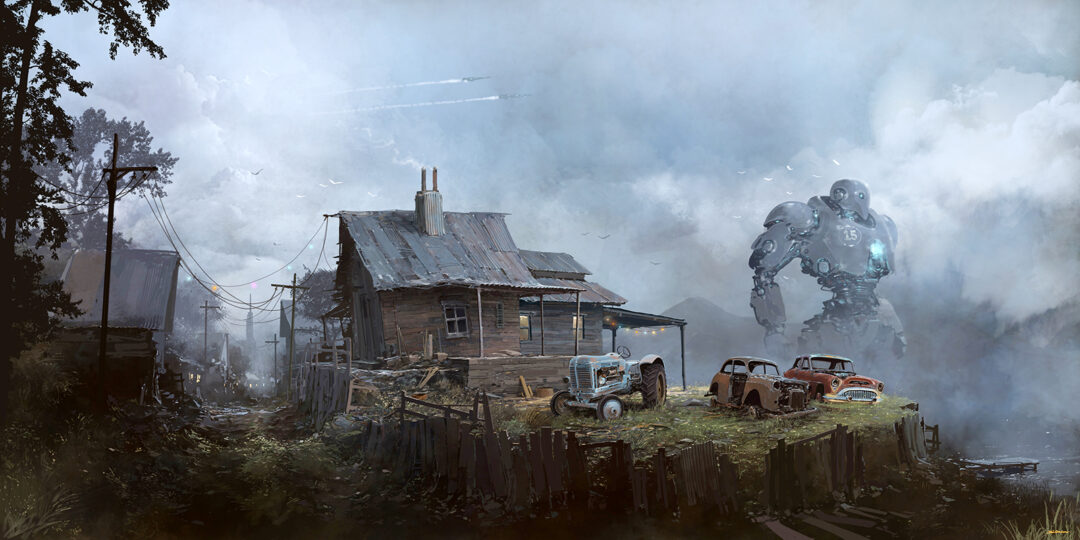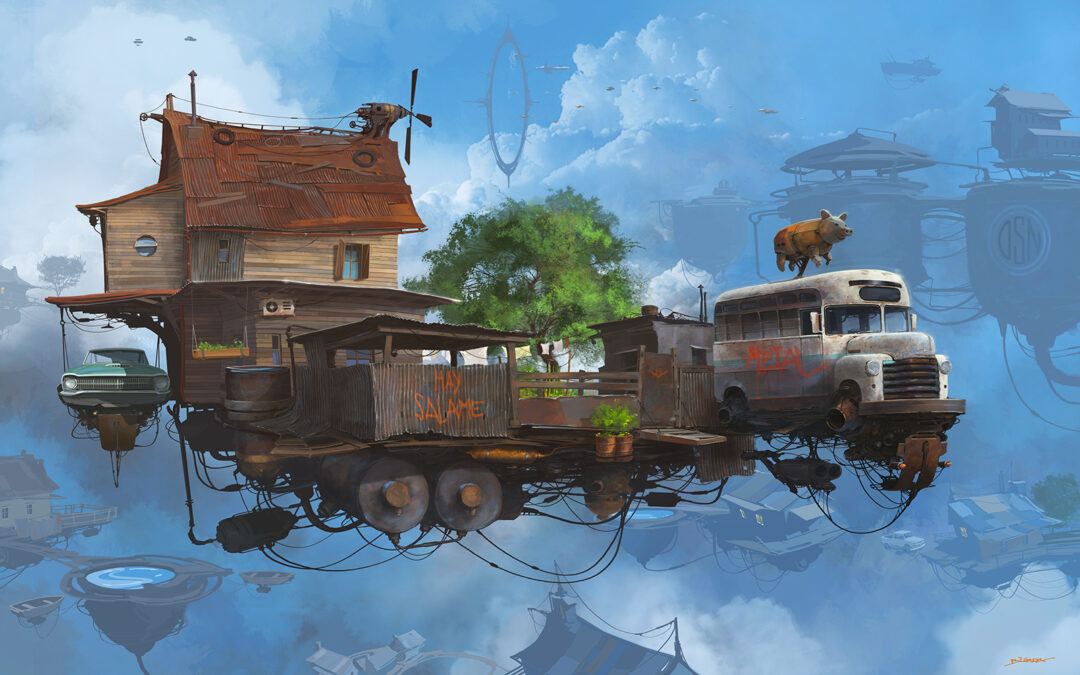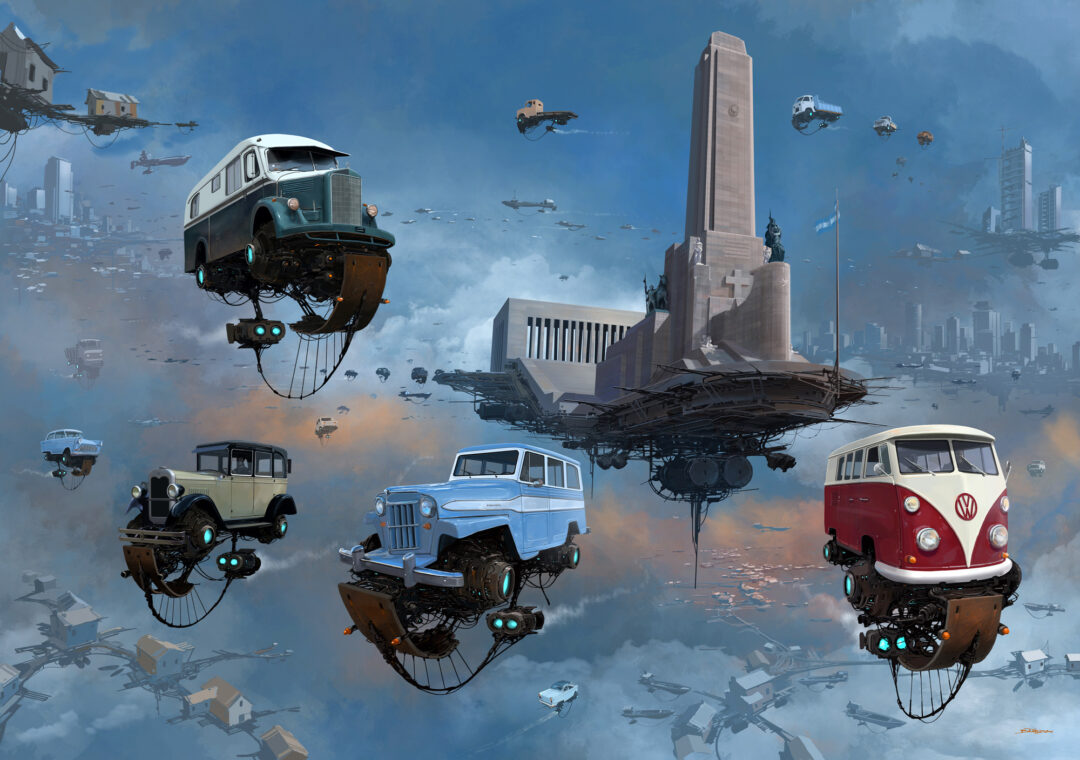Universo Chatarra: The Scrap Universe of Alejandro Burdisio
Argentinian artist Alejandro Burdisio (Burda) presents us with a melancholy future that does not forget the past.
Interview by:
Marcelo Guidoli
Artworks by:
Alejandro Burdisio
Argentinian artist Alejandro Burdisio (Burda) (b. 1963) presents us with a melancholy future that does not forget the past. After studying architecture and sharpening his pencils as a draftsman, Burdisio has made a career for himself as a concept artist. In his free time, Burdisio creates a digital illustration world with heavy political undertones, defined by the architectural and automotive iconography of a particular period in Argentinian history—what he calls Universo Chatarra. It is this body of work that I set out to ask the artist about.
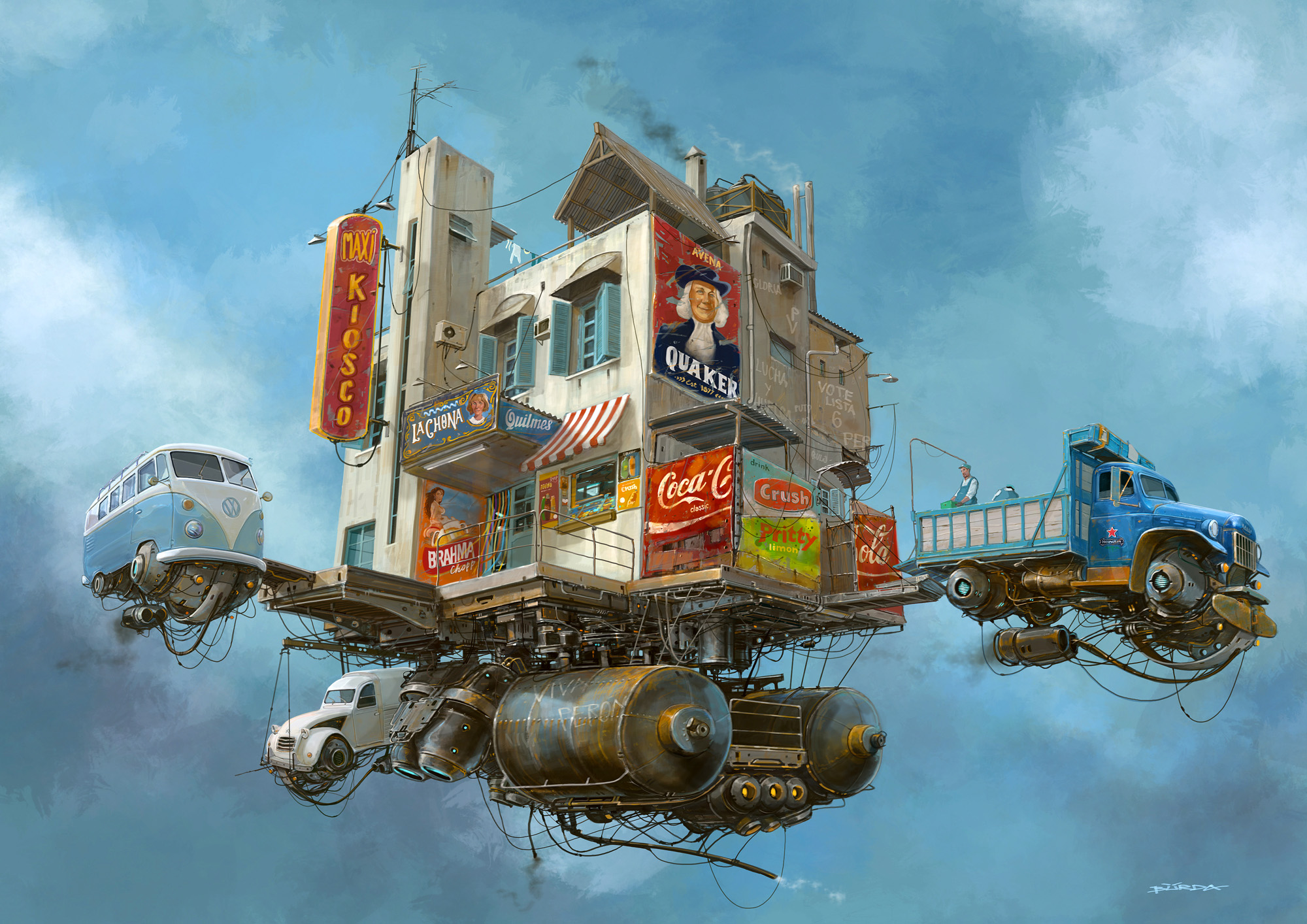
Marcelo Guidoli: Did you study illustration? Do you have a formal artistic education?
Burda: I’ve been drawing since forever. I’m an only child and remember that when I was five or six my mom used to take me with her whenever she had to run errands, so I always found a corner to sit and draw in my little sketchbook until she was done. I drew all the time, although I went through a typical teenage “rebellious” period in which I didn’t touch a pencil. When it comes to drawing, my formal education started right after I served in the army; I started taking painting classes and enrolled in a graphic design course. I had to choose between that path and architecture. I chose architecture. That’s when I truly started learning about perspective, to understand space, to acknowledge my surroundings and to “read” the city.
I began to fine tune my observational skills, to collect details and look upwards, where I really could appreciate the city as a whole. When most people walk, their vision is limited to the horizon line; they seldom look up. Up there I find details like statues carrying the weight of the facades, gargoyles, domes, etc. All of this contributes to the content that informs my illustration work. It’s wonderful to be able to appreciate history as told by an old building. You just have to look up.
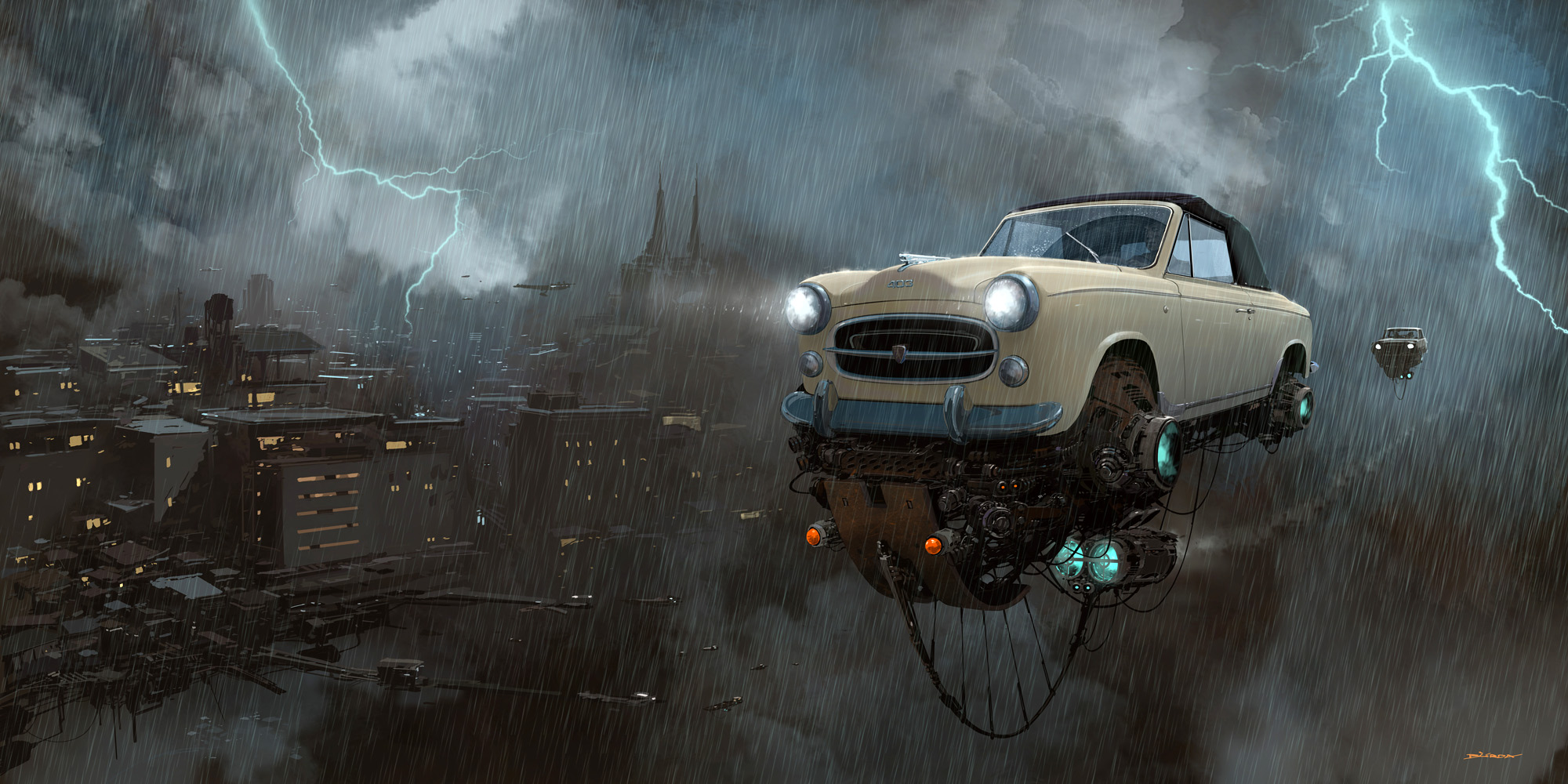
MG: Besides all the visual details that you collect by “seeing” the city, how do you inform yourself for your illustrations?
AB: At the studio, I have a huge collection of magazines, books, and encyclopedias, which I complement by using Google. I don’t use Pinterest to promote my work, but I do follow people whose work interests me; I also use that platform to collect and organize data concerning cars, architecture, and period wardrobes, etc. Although drawing techniques are important, you cannot communicate anything if the content isn’t relevant. I always tell my students to be aware of their surroundings, not just what they see on the surface, but also the reigning economic and sociopolitical connotations. It’s important to understand the world we live in.
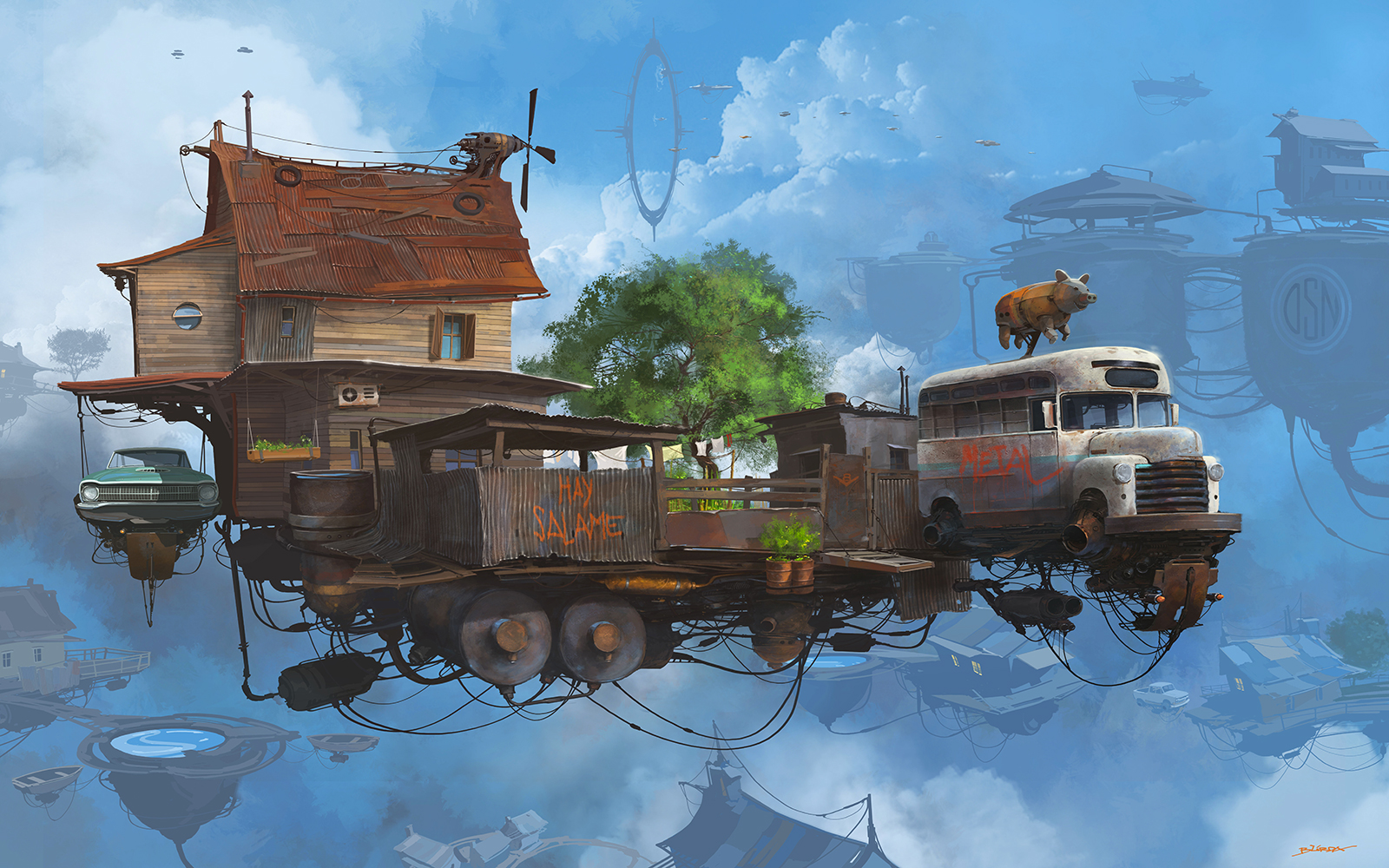
MG: Somehow Universo Chatarra is a political statement. You’re envisioning a technologically advanced, yet quite pessimistic future.
AB: There’s always an emotional or sociopolitical load. Many people think I’m a staunch Peronist, because I use plenty of Peronist political vocabulary, but that’s simply because that’s the only party that shaped the urban landscape—as it had its own architectural style. I don’t identify with any specific political party.
I don’t have an optimistic view of what technology can do for us, as human behavior leaves much to be desired. I include a lot of corrugated roofing in my work, which is a symbol of poverty all over Latin America. Many folks from countries like Pakistan, India, and Turkey empathize with my illustrations; they certainly understand the meaning of corrugated roofing, perhaps because poverty is more explicit in the developing world. An American may see those roof panels as quaint or colorful, but I believe they may not read it as a symbol.
With Universo Chatarra I didn’t invent anything. I simply combine things that are already there.
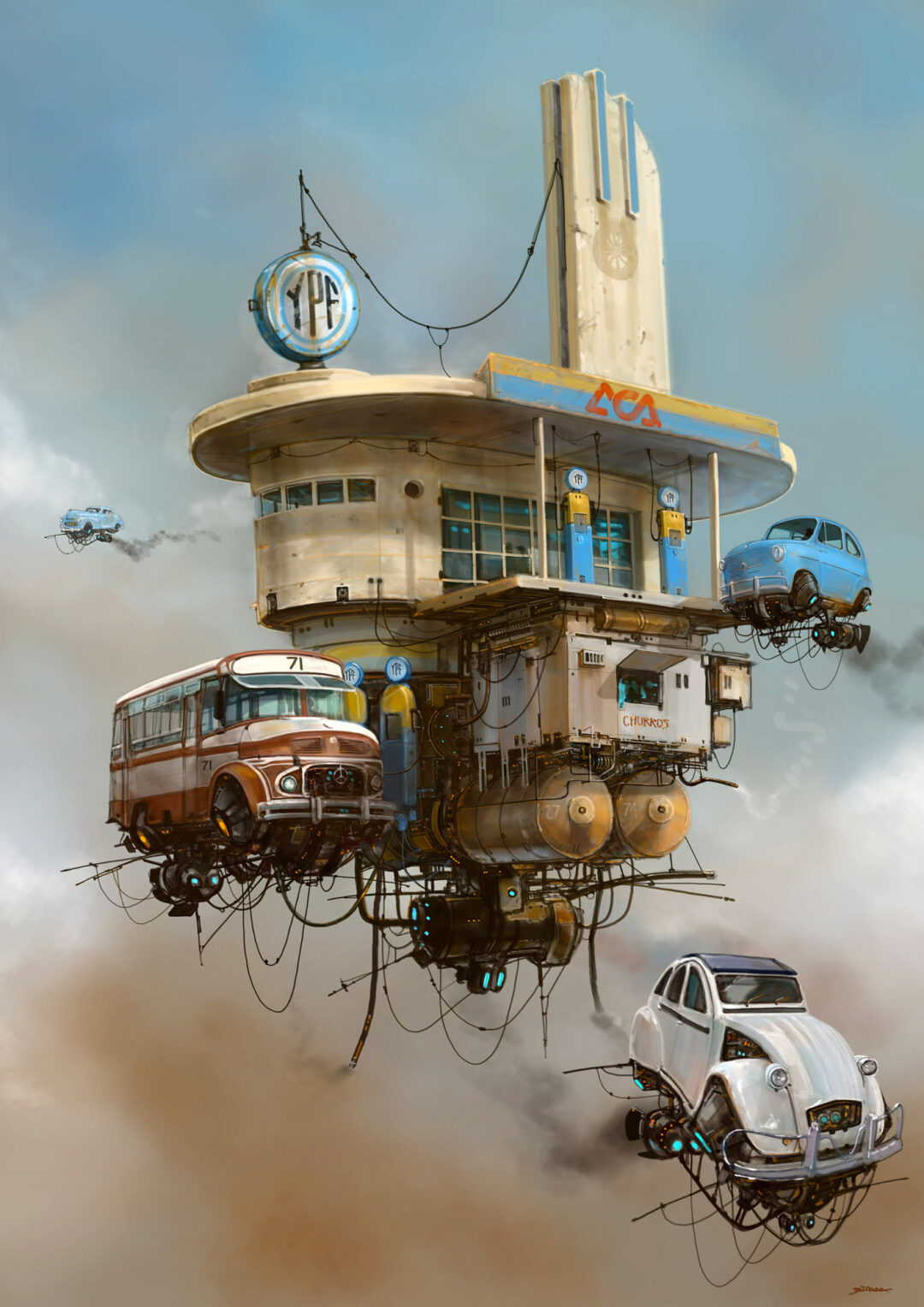
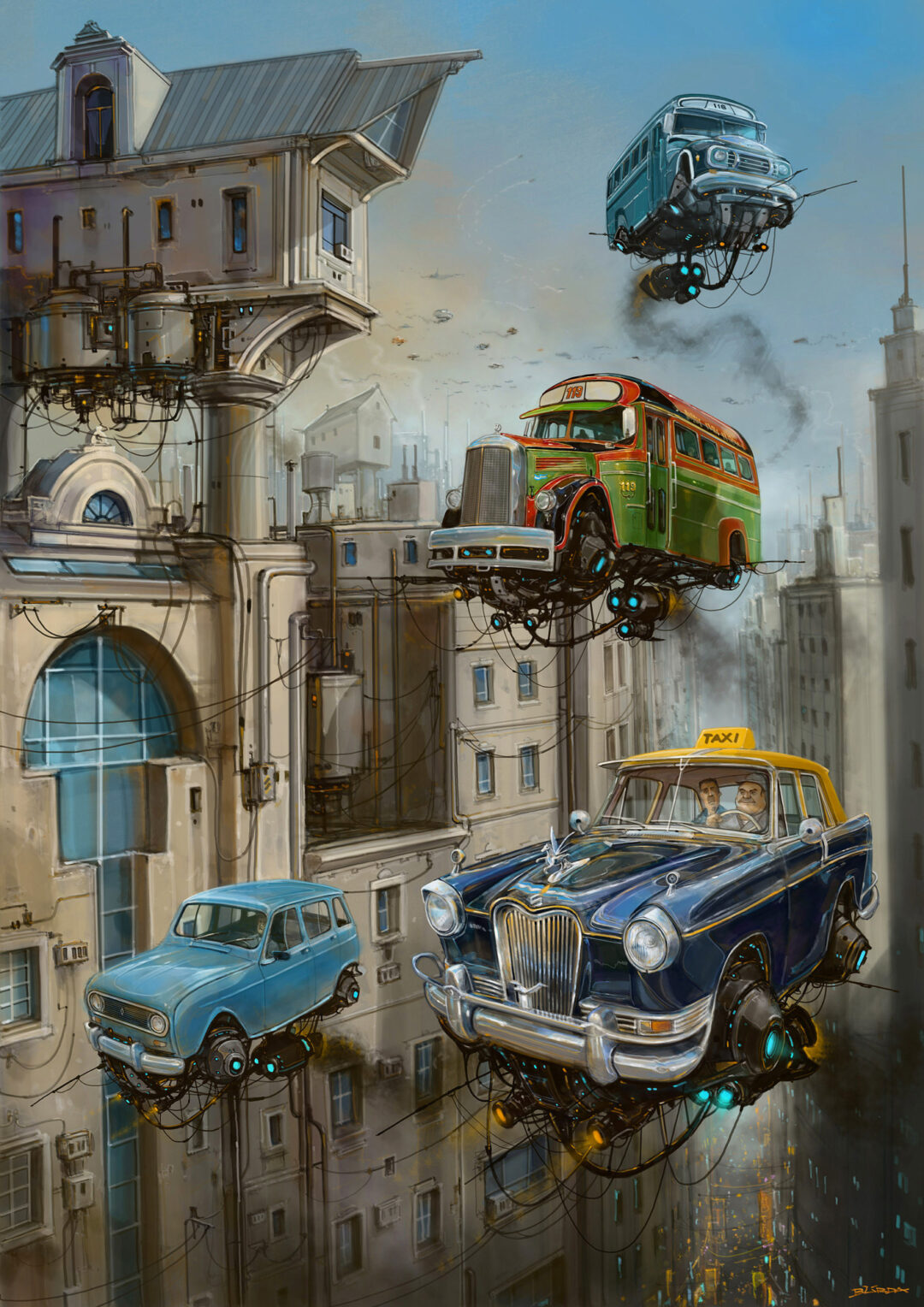
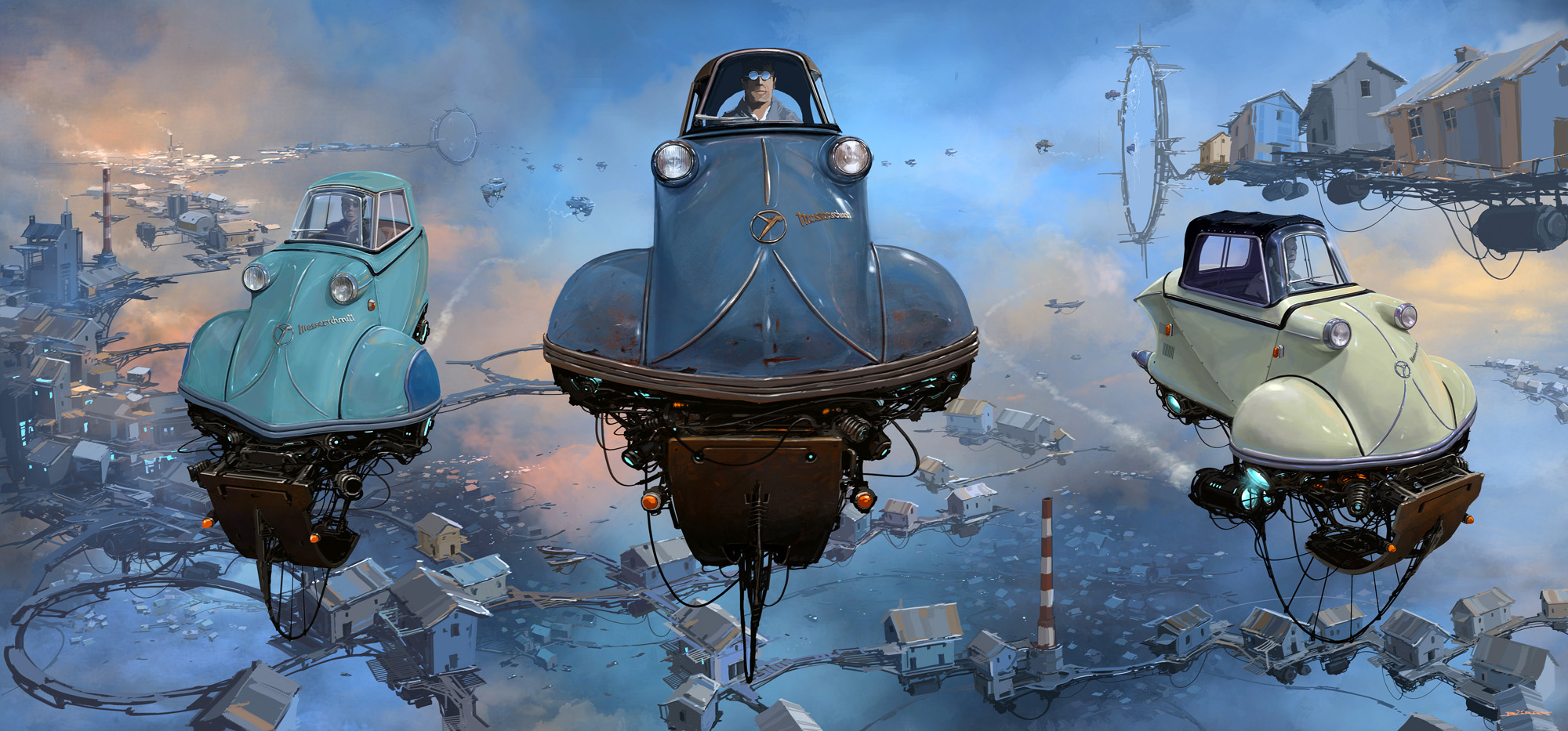
MG: Do you have any interest in taking Universo Chatarra to the realm of 3D? Or in compiling a book?
AB: I’m very interested in extending my universe to the 3D world but it’s quite a challenge from Córdoba, where I live.
There’s a plethora of very talented sculptors that can masterfully interpret my work, but prototyping is quite expensive here in Argentina, plus … I’m very busy and it’s hard to find the time.
The idea of doing a book is out there, but so far I only have thirty-three illustrations, and I want to reach my goal of seventy images before considering it. I’m working on it everyday.
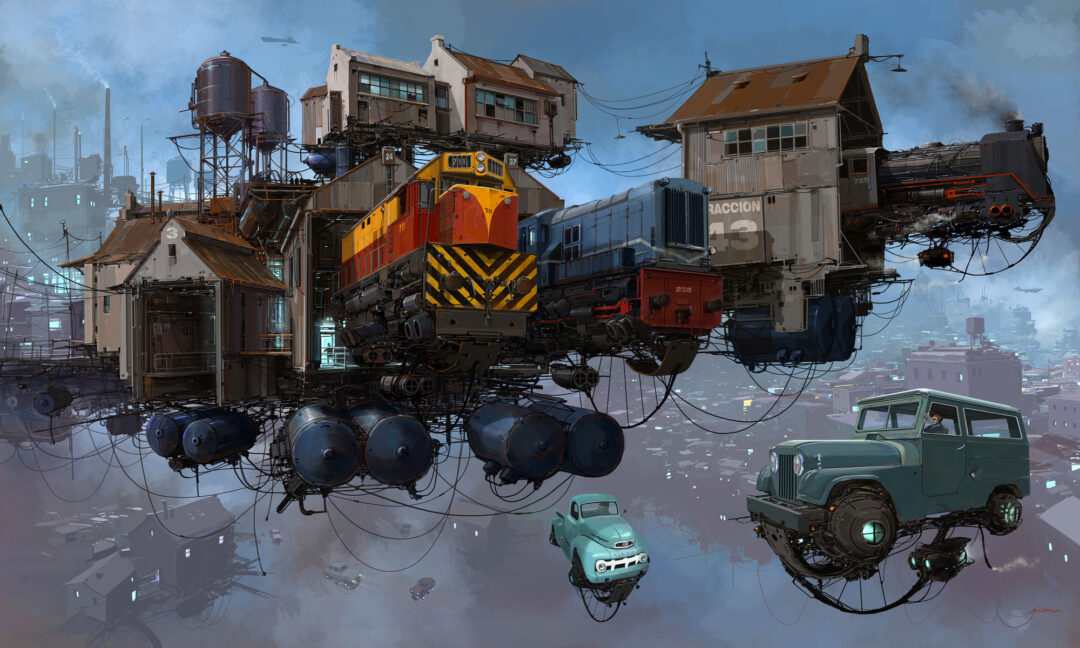
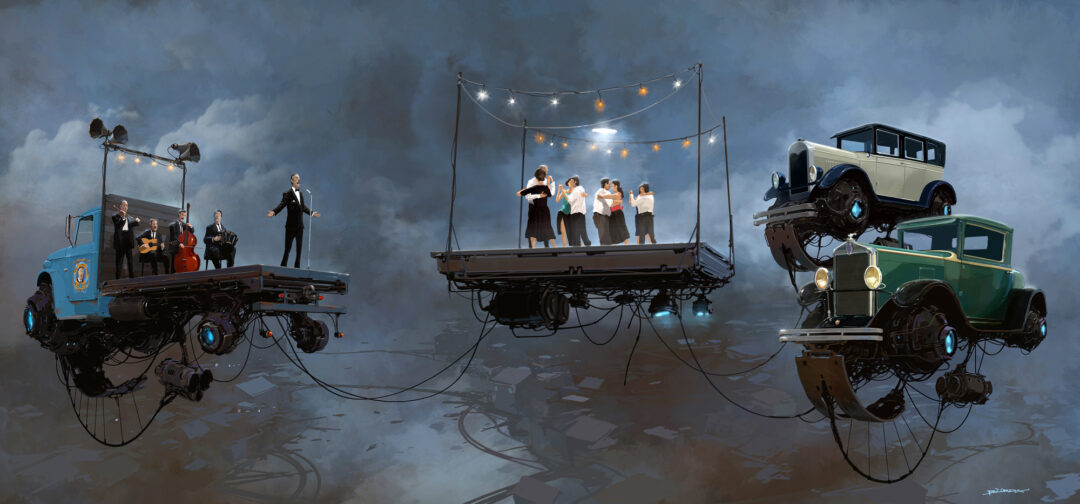
MG: Were you more influenced by comics or by films?
AB: Comics were my first love. I only discovered film as a teenager. My biggest comic influence was Juan Giménez’s “As de Pique,” the saga of a B-17 bomber during WWII. For people my age, that war constitutes a strong visual iconography, one that has fed many illustrators.
Another big influence from Argentina’s golden era of comics were the Editorial Columba adventure magazines like Fantasía, El Tony, and D’Artagnan. I also used to love Totemmagazine from Spain.
In terms of film, the movie Alien made quite an impression on me. I was fourteen at the time I saw it, and, before then, space terror movies weren’t what they are now. H.R. Giger, with all his darkness, came into the picture and created a new brand of storytelling. There was also Blade Runner, with all that great work from Syd Mead.
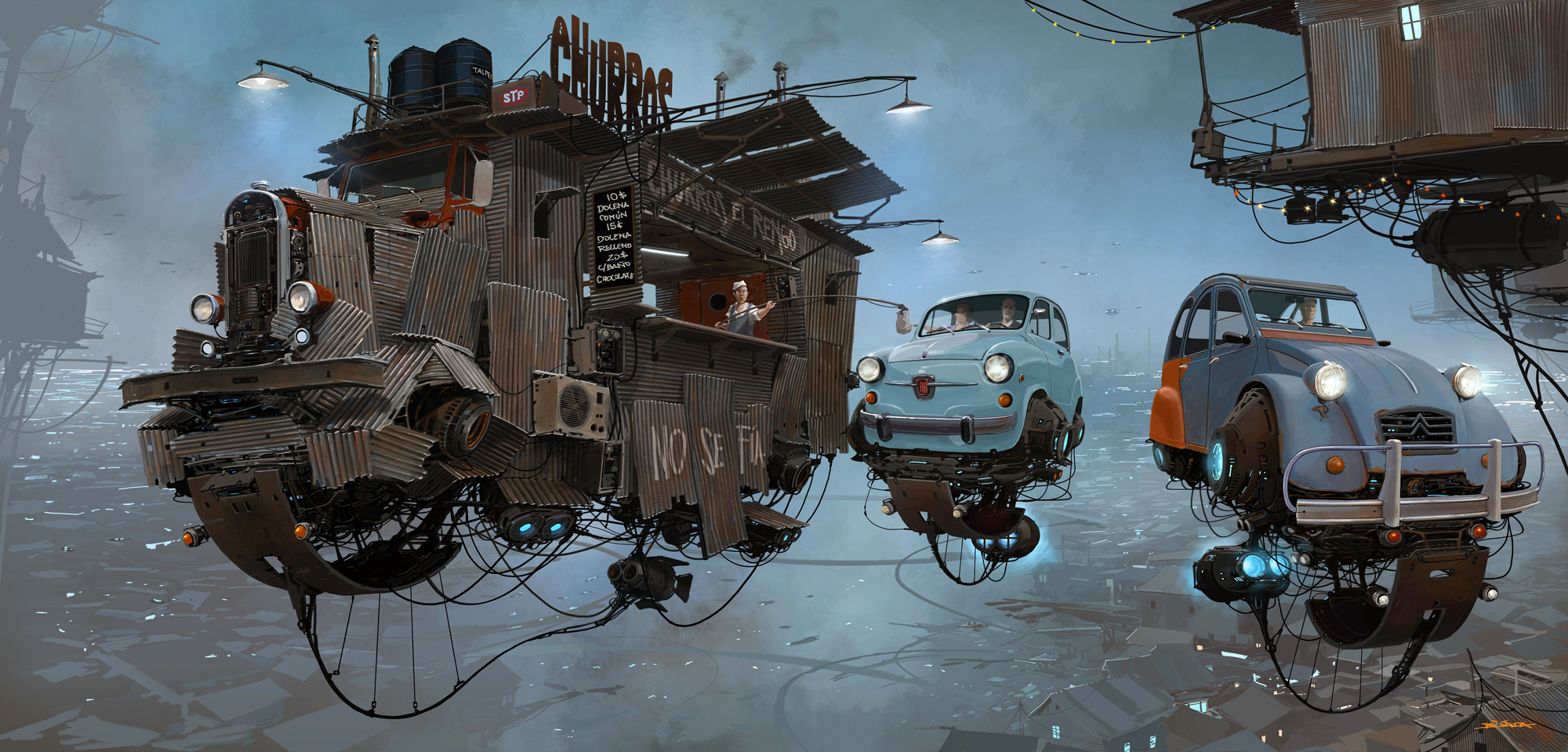
MG: Who are your heroes?
AB: There are plenty of talented artists that I genuinely admire. In the Concept Art field, I am a big fan of Sergey Kolesov, he’s mega-talented. In general I like how Russian illustrators paint. I also follow Craig Mullings and Fen Zhu. There are also two artists I’ve been into from the very beginning, Frank Frazetta and Moebius.
From Argentina, Alberto Breccia and Juan Giménez are—without a doubt—the most inspirational for me.
MG: Do you know Ian McQue’s work?
AB: Of course! He’s a great talent. Many people get us mixed up because we do something similar, but not quite the same. My work is defined by the folklore of a very specific place, while his work is more neutral in that sense. In my illustrations you can see old logos from now-defunct companies from the 1940s and 50s, as well as a political subtext that’s exclusive to my country. From the vehicles I draw, you can easily pinpoint the exact moment they were made and by whom, among other things. There are many historical layers in all of that, as well as a dose of humor.
MG: What piece of advice do you have for someone who’s just beginning in the field?
AB: The first thing is to make sure you’re passionate about what you do. Without passion it’s all quite difficult, because that’s the dynamo one needs to grow and evolve as an artist. You need to tend to your day job, of course, but it’s important to leave space for your personal artistic exploration. Innate talent helps, but it’s not enough; wasting it is a crime.
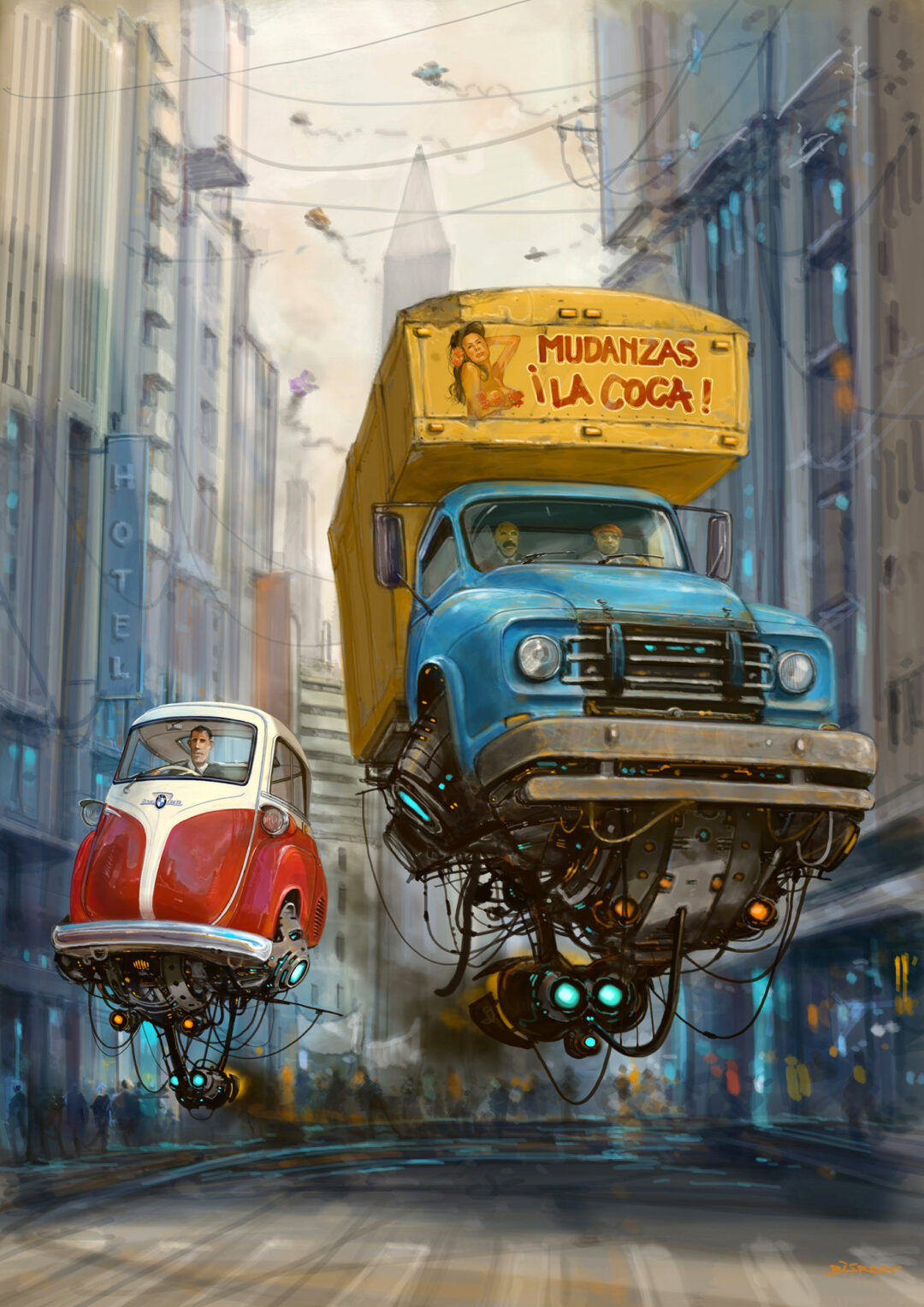
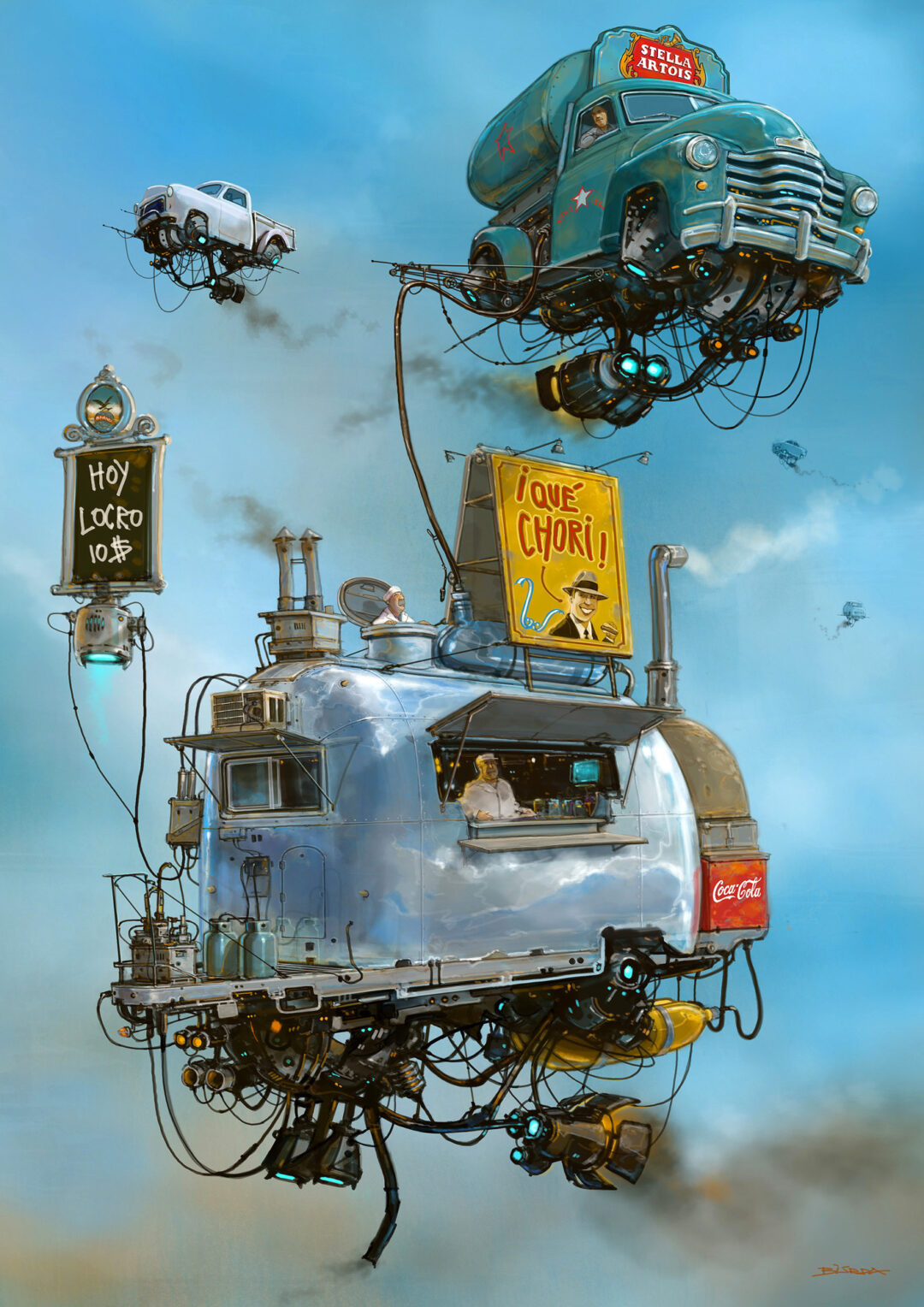
MG: Could you talk about your process? When I met you I was amazed at the fact that you used one only one Photoshop layer.
AB: That’s right, that’s how I worked for a long time—but now I use between five and seven layers; I don’t use many, because I like to correct things with the same brush. I am always downloading new brushes, and I also create my own, but, at the end of the day, I end up using the same two brushes.
A few years ago I significantly changed the way I work. I felt my work was stiff, and I decided to suppress line work as much as possible. I usually start by creating background color stains; then I create a color palette and then work with the geometry of color, light, and shadow. I don’t outline anything. I sculpt color as I go along. With a couple of brushstrokes I can now achieve what used to take me twenty or so. My stylus’ pressure sensitivity is purposely turned off. I feel like a painter who happens to use Photoshop as his main tool.
MG: Is there anything that’s particularly hard for you to draw?
AB: There are people who struggle with perspective; my weak spot is drawing feet and shoes.
MG: I find that fascinating. You mentioned your use of Pinterest already. I see you don’t use Instagram. What’s your take on social media?
AB: Instagram is designed to be used from your phone, and I literally pay no attention to my mobile. I do, however, use Facebook quite a lot; I consider it a pretty democratic platform. It’s a great way to connect with others, but I also see a lot of violence, for it’s very common to see people slandering talented artists—I recently encountered someone badmouthing Juan Giménez without really knowing what he was talking about. Umberto Eco said it beautifully, “Social networks made it possible for human stupidity to be everywhere.”
MG: Do you have groupies?
AB: I have a lot of followers, but I’m too old to have groupies [laughs]. My work always incorporates elements that create empathy with people, humor, a nod to the grotesque—which are accents that help us to connect with others. I try to be patient and receptive with those who come to me with questions or affection; I always share my process and never keep any secrets about what I do.
MG: Thank you so much. This has been really interesting.
AB: You’re welcome.
